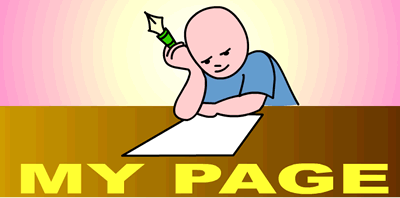
Dimdima
Online Children's Magazine from India

Dimdima
Online Children's Magazine from India

“The beauty of a colour can be felt and can't go any further, fragrance goes a little further, but music touches the innermost being.”
Music has healing powers. Tansen composed darbari kanada for Akbar's tensions, Muttuswami Dikshitar cured stomach aches with his Navagraha Krithis, he brought rain through his composition Anandamruthavarshini and Thyagaraja with Bilahari brought a dead person back to life. Thus raga therapy in India had been prevailing since centuries.
Every swara corresponds to a chakra in ascending order. The 1st swara 'Sa' is related to the first chakra Muladhara, the 2nd swara 'Ri' to the second chakra swadhishtana and so on. To cure a problem, we need to stimulate the chakra related to the part affected.
For example, if we need to cure diabetes, we need to stimulate the Vishudhi Chakra, which is relate to the Swara 'Da', in raga bageshree 'Da' is the dominant swara. Thus raga bageshree is played to cure diabetes. Our brain experiences four types of wave's alpha, beta, theta and delta waves, each of these have different frequencies and determine our moods. When we are in alpha state, we are in most active mood and in delta state we are in deep sleep or high meditative state. The frequencies of the raga thus change the moods by altering frequencies of the brain. The muscle contracts when a swara is heard and relaxes between the interval of two swaras. Thus during the contractions and relaxations a network of sounds regularize the blood flow in that part which enhances energy in that area.; Each of the 72 Melakarta ragas control a specific nerve among the 72 nerves. One of the unique features of carnatic music is that every raga has the maximizing effect during a particular time of the day. Listening to the raga at that time accentuates and enhances the effect of the raga. So we also need to keep in mind the timing one needs to listen. Out of all the instruments, one instrument is said to be more effective ie the veena, daiva veena that is human voice and manushi veena, the man made veena. Now question might arise, why only veena, Music on Veena is said to be very effective since the structure of Veena is very much identical to the structure of a human body. Just like the 24 frets of the Veena, human backbone has 24 vertebrae. The gap between each fret in veena and each fret in human body becomes narrower as we proceed upwards. The seven strings in veena resemble 7 Dhatus in human body.
There is another concept of music called remedial music, which is like a preventive medication, one of the preventive ragas is the Ananda Bhairavi.
The benefits of raga therapy over other's are:
* It has overlapping effects that is one raga can influence many organs.
* It need not be an alternative but can just be a supplement to enhance the treatment by medication
* It has No side effects
* Emotional changes
The ECG varies when we listen to a raga. There has been a study where the minimum mentally retarded, maximum mentally retarded and medium retarded were made to listen to the beta raga. Simultaneously, the children were observed, the minimum retarded showed response slowly but maximum and medium
retarded had smiles immediately. The minimum retarded are like us, hence they give negative affirmations to their mind, and hence effect is observed slowly. This shows that Music depends on the power of belief; Cancer patients reported that they experienced less pain when they underwent a
surgery if they listened to music because it diverted their mind. Now the next question comes, whether music can be used as an alternative, the answer is yes to certain diseases, this has been proven by a few researches, and you can go through them. Thus music is not a mere commodity of entertainment but has the power to penetrate into our body and stimulate chakras, alter brainwave patterns and change body systems.
D. Ashrita
Class 10
Bhavan's Public school
Jubilee hills, Hyderabad
RUBY MARK
Hey! This is great.. 😚😎😗🙂
EXPLORE MORE...
Dimdima is the Sanskrit word for ‘drumbeat’. In olden days, victory in battle was heralded by the beat of drums or any important news to be conveyed to the people used to be accompanied with drumbeats.
Bharatiya Vidya Bhavan
K. M Munshi Marg,
Chowpatty, Mumbai - 400 007
email : editor@dimdima.com
Bharatiya Vidya Bhavan
505, Sane Guruji Marg,
Tardeo, Mumbai - 400 034
email : promo@dimdima.com
Dimdima.com, the Children's Website of Bharatiya Vidya Bhavan launched in 2000 and came out with a Printed version of Dimdima Magazine in 2004. At present the Printed Version have more than 35,000 subscribers from India and Abroad.